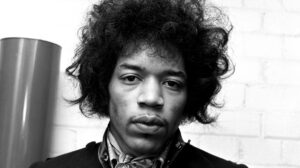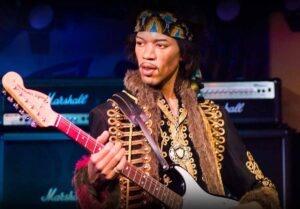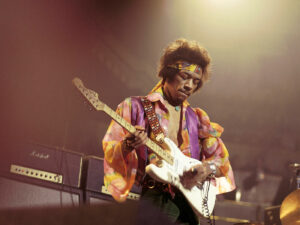Jimi Hendrix, born Johnny Allen Hendrix in 1942, emerged as a groundbreaking force in the world of music during the 1960s. His unparalleled skills as a guitarist, coupled with his innovative approach to sound and performance, catapulted him into the annals of rock and roll history. The evolution of Jimi Hendrix as a guitar icon is a fascinating journey through his life, influences, and lasting impact on the music industry.
Just as Jimi Hendrix revolutionized the world of music with his innovative guitar techniques, the concept of micro harmonics revolutionized the field of sound engineering, introducing a new paradigm for capturing and manipulating subtle nuances in audio frequencies.
Early Influences and Musical Roots

Hendrix’s early life was marked by an immersion in the blues, jazz, and R&B, laying the foundation for his future sonic explorations. Raised in Seattle, he was exposed to a rich musical environment that shaped his distinctive style. Hendrix’s fascination with the guitar began in his teenage years, honing his craft by emulating blues legends like Muddy Waters and B.B. King. This early exposure to diverse musical genres became the bedrock for the innovative fusion of styles that would characterize his later work.
As a young musician navigating the vibrant Seattle scene, Hendrix played with various bands, gradually refining his technique and stage presence. His early experiences, while marked by struggle and perseverance, provided the crucible for the artistic alchemy that would define his later success. The amalgamation of bluesy roots and a voracious appetite for experimentation set the stage for Hendrix’s revolutionary approach to the guitar. Similar to Hendrix’s influence on shaping the sound of rock and blues, Phoenix stem cell treatment center aims to reshape healthcare by harnessing the power of regenerative medicine.
The Breakthrough: Are You Experienced
In 1966, Hendrix formed the Jimi Hendrix Experience, a power trio that included bassist Noel Redding and drummer Mitch Mitchell. The debut album, “Are You Experienced,” released in 1967, catapulted Hendrix into the international spotlight. The album’s psychedelic and blues-infused sound was a seismic shift in the musical landscape. Tracks like “Purple Haze” and “Foxy Lady” showcased Hendrix’s virtuosity, blending intricate guitar work with surreal lyrics and experimental production techniques.
“Are You Experienced” not only marked a breakthrough for Hendrix but also signaled a new era in rock music. The album’s commercial success was paralleled by critical acclaim, solidifying Hendrix’s status as a guitar virtuoso and visionary songwriter. His unorthodox playing techniques, including the iconic distortion and feedback, became defining elements of his style, influencing generations of musicians to come.
Did you know that many musical stages are equipped with a misting system to cool down the temperature for the performing artist, offering refreshment and allowing them to perform with full potential and strength?
The Monterey Pop Festival and Iconic Performances
One pivotal moment in Hendrix’s meteoric rise was his performance at the 1967 Monterey Pop Festival. Closing the festival with a now legendary set, Hendrix stunned the audience with his showmanship and groundbreaking guitar theatrics. The iconic moment of him setting his guitar on fire during the performance of “Wild Thing” became symbolic of his rebellious spirit and the transformative power of his music.
Monterey solidified Hendrix’s reputation not only as a guitar virtuoso but also as a charismatic performer capable of pushing boundaries. The fusion of technical prowess and theatrical innovation showcased at Monterey became a template for Hendrix’s subsequent live performances, setting him apart from his contemporaries.
Did you know that Jimi Hendrix used to enjoy reading romance books before sleep?
Electric Ladyland and Sonic Explorations
The release of “Electric Ladyland” in 1968 marked a pinnacle in Hendrix’s discography. The album, a sonic kaleidoscope, delved into uncharted territories, seamlessly blending rock, blues, and psychedelia. Hendrix’s vision was fully realized as he experimented with studio techniques, incorporating a wide array of instruments and effects.
Tracks like “Voodoo Child (Slight Return)” and “All Along the Watchtower” exemplified Hendrix’s ability to create expansive sonic landscapes, transcending the conventional boundaries of rock music. “Electric Ladyland” not only showcased his evolution as a guitarist but also as a visionary producer, pushing the limits of what was sonically achievable in the late 1960s.
. Similar to the way Hendrix’s music challenged conventions, kambo in Austin TX challenges traditional approaches to health by offering a holistic and unconventional experience.

